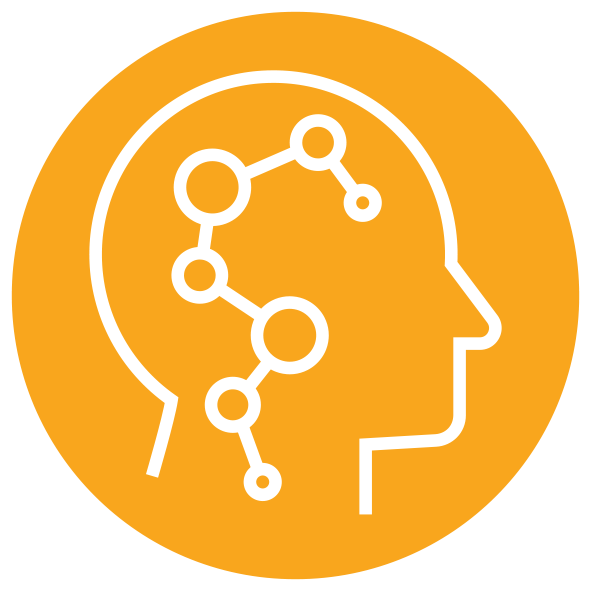Submitted by Meg Sipos
on February 24, 2020

** QUANTUM SHORTS 2019/2020: RUNNER UP
>> Read an interview with the author
Only trust yourself.
Sometimes, don’t do that either.
Lea stared at her inked words until they became weathered lines staining the page. Then she stuffed the crumpled paper back into her pocket. Glancing at the clock, she lifted herself from her desk and moved toward the kitchen.
Knowing what to make for dinner had become difficult since The Rip. She never knew what version of her husband would come home. Twice now, her husband had been her wife.
A rip in the fibers of reality, news outlets had called it.
Cue the doomsdayers, Aaron had joked while knocking back whiskey and pacing in front of the television as a news anchor began discussing the story of a man’s late husband coming home as if he had simply popped out for coffee and not been dead for two years.
Rather than prompting the end-times prophets, The Rip inspired arguments over the mere concept of reality. Scientists called this significant. Irreversible. A fascinating—concerning—shift in the universe.
Philosophers called it an existential disaster.
At first, Lea and Aaron relished the novelty. Discussed the appeal of meeting themselves. The allure of courting each other’s doppelgangers.
A chance to experiment freely, Aaron told her. Without the complications that come with cheating or forming emotional connections with other people.
At first, they considered the other versions of themselves that began to manifest no different. The first few they met felt like clones. Copies.
The same.
At first, they only knew of The Rip. In Grandview Park.
Then, more rips appeared.
In other cities. Towns. Prairies.
Smaller ones too.
Harder to detect.
To navigate.
At first, they could find their way back to their own apartment in their own version of reality. When they did, they would tell each other everything—the other you spent a semester abroad or you love snowboarding or you make an amazing beef wellington even though you, here, are vegetarian or have you ever thought about the peace corps, because the you there is—and they would find themselves overwhelmed with passion for each other.
At first, the differences between themselves and themselves were miniscule. As if one small, seemingly insignificant choice set them all on a slightly different course.
When the rips began to multiply, though, the differences between their realities and their other selves mounted.
The you there lost her mother.
That you didn’t get a doctorate. He started working right after high school.
Did you know you’re an actor? Don’t you have nightmares about being up on stage?
You went to prison. Five more years to go, but you’re up for parole.
When the rips started to feel infinite, they began to have trouble finding their way home.
I couldn’t find the right path back, Aaron told her after a two-week absence.
I stepped into another reality by accident yesterday. Didn’t even notice until I found a vacant lot where our apartment building should be. Lea had gone out to buy groceries. Came back emptyhanded.
I think the world I visited last month is gone. Or…the rip moved?
Eventually, wanderlust snuffed out of her, Lea tried to halt their experiments. Tried to stop the world-walking. Began to work from home. Refused to venture out of the building.
She couldn’t risk stepping out her door and into a post-apocalyptic version of their world. One she might not escape from.
Isn’t this world post-apocalyptic? Aaron asked. Aren’t they all?
So Aaron still left while Lea stayed.
And she never knew who might come home.
When she heard the key rattling against the door as she stirred more butter into the mushroom risotto she had settled on making, she lifted her spatula and waited for the click of the lock and the rustling of Aaron taking off his shoes before calling out. Who are you?
I’m me. The pause lingered. But not to you, I guess.
With a sigh, she stared down at the glistening rice in the pan and continued stirring. Safe to say that reality is still collapsing around us then?
Aaron entered the kitchen and she glanced up at him, assessing.
Unnaturally hunched. Pale face.
Disconcerting smirk.
Honey, you either act like it’s the end of the universe or you just live your life.
Shadowed eyes. Sloppy scruff.
You have to admit: it’s hard to live your life when there are other yous wandering around. Reality is falling apart.
He walked toward her and slipped an arm around her waist, fingers rougher than she was used to. Not like the other Aarons.
Off.
Always was. His shadow eclipsed her as he whispered in her ear. Relax. Enjoy the ride.
She set the spatula on the counter and tilted her head toward him. Tried to ignore her growing alarm.
Because he was still Aaron.
Just also…not.
But… Like, I kind of know you. Intimately even. Because I’ve always known you. But I also don’t know you at all, because I’ve never known you.
Her chest tightened. Willed her to stop. But these incessant thoughts began to bubble over. And even though you are you, you are also not you, because you’re not my you. It’s just become so complicated. It’s hard to keep track of me and you and the other yous and the other mes and the you that I’ve known and loved for ten years.
Aaron’s hands gripped her hips, his breath now hot against her neck. She pushed past the rising unease and continued. And, I’m just…I’m tired of knowing you and not knowing you at the same time. Of you being you and not being you at the same time. I just want things to be normal again. Simple.
Yeah, because things used to be so simple before.
His scoff rang sharp.
Echoed.
Lea’s hand went to the pocket she’d stuffed her crinkled note in.
Only trust yourself.
Aaron felt wrong.
Her hand hovered.
Sometimes, don’t do that either.
Then reached for the spatula and stirred.



